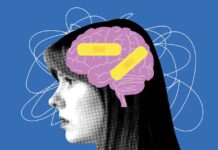When it comes to addressing mental health challenges in teenagers, finding effective and safe treatment options is a top priority for many families. Transcranial Magnetic Stimulation (TMS) Therapy is gaining attention as a promising alternative for treating depression in young people. Unlike traditional methods that often involve medications or invasive procedures, TMS offers a non-invasive approach that uses magnetic fields to stimulate specific areas of the brain linked to mood regulation. This innovative therapy targets the left dorsolateral prefrontal cortex, an area frequently underactive in individuals experiencing depression, aiming to boost neuronal activity and foster new neural connections. As more teenagers and their families explore TMS Therapy, understanding its benefits, potential side effects, and overall efficacy becomes crucial in making informed decisions about mental health care.
Understanding TMS Therapy for Teenagers
According to experts at BestMind Behavioral Health Center, Transcranial Magnetic Stimulation (TMS) Therapy is an innovative approach to treating depression in teenagers, offering a non-invasive alternative to traditional methods. By utilizing magnetic fields, TMS targets specific areas of the brain associated with mood regulation, particularly the left dorsolateral prefrontal cortex. This area is often underactive in individuals suffering from depression. The therapy involves delivering magnetic pulses to stimulate neuronal activity and promote the growth of new neural connections, which can help alleviate depressive symptoms.
One of the key aspects of TMS Therapy is its focus on safety and comfort for young patients. During sessions, teenagers sit comfortably while a healthcare professional administers the treatment. The process is painless and does not require anesthesia or sedation. Benefits of TMS include:
- Non-invasive procedure: No surgical interventions or medications are involved.
- Minimal side effects: Most patients experience only mild discomfort, such as slight headaches or scalp tingling.
- No impact on cognitive functions: Studies suggest that TMS does not negatively affect cognition and may even improve certain cognitive abilities like verbal memory.
This therapy has shown promise in helping teenagers who have not responded well to other treatments, providing a beacon of hope for those struggling with treatment-resistant depression.
Benefits of TMS Therapy for Adolescents
Transcranial Magnetic Stimulation (TMS) therapy offers a range of benefits for adolescents dealing with mental health challenges. One of the most significant advantages is its non-invasive nature. Unlike traditional treatments that often rely on medications, TMS uses magnetic fields to stimulate specific areas of the brain associated with mood regulation. This approach eliminates the need for pharmaceuticals, which can sometimes lead to unwanted side effects or dependency. Additionally, TMS therapy is known for its minimal side effects, making it a safer option for young patients. Commonly reported side effects such as headaches and scalp discomfort are generally mild and temporary, allowing teenagers to continue their daily activities without significant disruption.
Beyond its safety profile, TMS therapy has shown promising results in improving mental health conditions among teenagers. Studies have indicated that this treatment can enhance overall brain function, potentially leading to better cognitive performance and emotional well-being. Adolescents undergoing TMS therapy have reported improvements in symptoms such as low energy levels, difficulty concentrating, and lack of motivation. These benefits make TMS an appealing option for those who have not found success with other forms of treatment. Furthermore, many insurance plans cover TMS therapy, making it an affordable choice for families seeking effective mental health solutions for their teens. With its combination of efficacy and safety, TMS stands out as a valuable tool in the fight against adolescent depression.
Potential Side Effects of TMS in Young Patients
When considering Transcranial Magnetic Stimulation (TMS) therapy for teenagers, it’s essential to be aware of the potential side effects, although they are generally mild and temporary. The most common side effects reported by young patients undergoing TMS therapy include headaches and scalp discomfort. These symptoms typically arise due to the magnetic pulses applied to the scalp during treatment sessions. Fortunately, these effects are usually short-lived and tend to subside shortly after the session ends. It’s important for parents and guardians to understand that while these side effects might cause some initial concern, they are a normal part of the treatment process and do not indicate any long-term harm.
In addition to headaches and scalp discomfort, some teenagers may experience minor muscle twitching during or after TMS sessions. Again, these reactions are considered transient and should not deter those considering this therapy as an option for treating depression. To provide a clearer picture, here is a list of common side effects associated with TMS therapy in adolescents:
- Headaches
- Scalp discomfort
- Muscle twitching
It’s reassuring to note that preliminary studies have shown no significant negative impact on cognitive functions in adolescents undergoing TMS. In fact, some research even suggests a modest improvement in verbal memory among this age group. As with any medical treatment, it’s crucial to maintain open communication with healthcare providers to ensure that any concerns or unusual symptoms are promptly addressed.
Efficacy of TMS for Treatment-Resistant Depression
Transcranial Magnetic Stimulation (TMS) therapy has emerged as a promising option for adolescents grappling with treatment-resistant depression. For teenagers who have not found relief through traditional therapies such as antidepressants or psychotherapy, TMS offers a beacon of hope. Clinical trials have demonstrated its potential, with studies indicating a 44% remission rate among participants aged 13-21 years old. This suggests that TMS can be an effective alternative for young individuals who have struggled to find success with conventional treatments.
The efficacy of TMS in treating depression is further supported by its ability to target specific brain areas associated with mood regulation. By stimulating the left dorsolateral prefrontal cortex, TMS enhances neuronal excitability and promotes the growth of new connections, which can lead to significant improvements in depressive symptoms. Research has shown that:
- Patients often experience a reduction in affective symptoms for up to one year after treatment.
- A 60-percent response rate at 12 months yields remission rates at 30 percent.
- Approximately 84 percent of patients report benefits following a course of TMS therapy.
These findings underscore the potential of TMS as a viable therapeutic intervention for adolescents facing the challenges of treatment-resistant depression, offering them a chance for improved mental health and quality of life.
Challenges and Considerations in Using TMS for Teens
When considering Transcranial Magnetic Stimulation (TMS) therapy for teenagers, several challenges and considerations come into play. One of the primary concerns is the current status of FDA approval for this age group. While TMS has shown promise in treating depression in adolescents, it has not yet received full FDA approval, specifically for teenagers, which means that standardized treatment protocols are still under development. This lack of official endorsement can make it difficult for healthcare providers to confidently recommend TMS as a first-line treatment option for young patients. Additionally, the need for more extensive research is evident, as existing studies are relatively small and recent, leaving some uncertainty about the long-term effects of TMS on brain development in adolescents.
Another important consideration is the cost associated with TMS therapy. Each session can range from $300 to $500, and since multiple sessions are typically required, the total expense can quickly add up. For families without adequate insurance coverage, this could pose a significant financial burden. It’s crucial to explore insurance options and verify whether TMS therapy is covered under specific plans. Some insurance providers may offer partial or full coverage, but this varies widely. When evaluating TMS as a treatment option, it’s essential to weigh these financial aspects alongside its potential benefits. Here are some key points to consider:
- FDA Approval Status: Currently, it is not fully approved for teenagers.
- Research Needs: More extensive studies are required to understand long-term effects.
- Cost Considerations: Sessions can be expensive without insurance support.
- Insurance Coverage: Varies by provider; check specific plan details.
By understanding these challenges and considerations, families can make more informed decisions about whether TMS therapy is a suitable option for their teenager’s mental health needs.
Comparing TMS with Other Depression Treatments
When considering treatment options for depression in teenagers, it’s essential to compare Transcranial Magnetic Stimulation (TMS) therapy with more traditional methods like antidepressants and psychotherapy. TMS therapy stands out due to its non-invasive nature and the absence of medication-related side effects, which can be a significant advantage for young patients. Unlike antidepressants, which often come with a risk of inducing suicidal thoughts in adolescents, TMS offers a safer alternative with minimal adverse effects. Common side effects of TMS are typically mild, such as headaches or scalp discomfort, and they tend to be transient. In contrast, antidepressants can lead to more severe side effects that may persist over time.
Moreover, the efficacy of TMS therapy is noteworthy, especially for those who have not responded well to conventional treatments. Clinical trials have shown promising remission rates in adolescents undergoing TMS therapy, providing hope for those struggling with treatment-resistant depression. While psychotherapy remains a valuable tool in managing depression through cognitive and emotional support, it may not always address the neurobiological aspects of the disorder as effectively as TMS. Patients often report feeling more engaged and motivated during TMS sessions compared to traditional therapies. Here are some key differences between these treatments:
- Efficacy: TMS has shown higher remission rates in certain cases compared to standard therapies.
- Safety Profile: Minimal side effects with TMS versus potential severe side effects from medications.
- Patient Experience: Many find TMS sessions more tolerable and less intrusive than other treatments.
Ultimately, choosing the right treatment involves considering individual needs and circumstances, making it crucial to consult healthcare professionals when exploring these options.
Summary
Transcranial Magnetic Stimulation (TMS) Therapy is gaining attention as a promising treatment for teenagers dealing with depression. Unlike traditional methods that often involve medication, TMS offers a non-invasive approach by using magnetic fields to stimulate specific brain areas linked to mood regulation. This innovative therapy targets the left dorsolateral prefrontal cortex, which is typically underactive in those suffering from depression. By delivering magnetic pulses, TMS encourages neuronal activity and fosters the growth of new neural connections, potentially alleviating depressive symptoms without the need for anesthesia or sedation.
One of the appealing aspects of TMS Therapy is its safety and comfort for young patients. The procedure is painless, and most side effects are mild, such as slight headaches or scalp tingling. Importantly, TMS does not negatively impact cognitive functions; in fact, it may enhance certain abilities like verbal memory. This makes it an attractive option for teenagers who haven’t responded well to other treatments. With many insurance plans covering TMS therapy, it becomes an accessible choice for families seeking effective mental health solutions for their teens. Overall, TMS stands out as a valuable tool in addressing adolescent depression, offering hope where other treatments may have fallen short.







